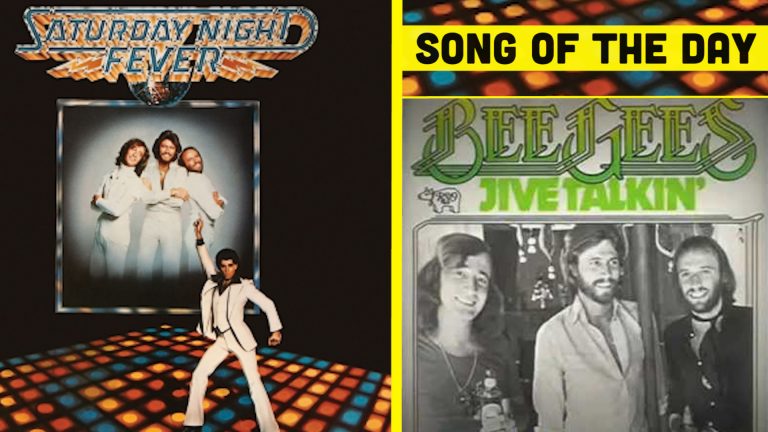

They would often point out that disco became homogenized in the years after they got to it, and that their sound was really an extension of R&B. This criticism would weigh on them in later years as they felt that accusations of selling out and creating popular schlock were out of line. The group, which had considerable success before the disco era, took a lot of heat in the press. They had seven more #1 hits in the disco era, but the band went out of style at the same time as white leisure suits. We finished the song at the Criteria studios that day.” Some tar noises made a rhythmic sound on the wheels of our car, which created the feel to the type of song we wanted to write. We had the idea as we passed over a bridge. Robin Gibb explained to The Mail On Sunday November 1, 2009: “We’d already thought up the title for this song, but it wasn’t until Barry, Maurice and I drove from Biscayne Bay to Miami that we realized what the tune was going to be.

The rhythm was inspired by the chunka-chunka-chunka sound of a car rolling over a bridge crossing Biscayne Bay near Miami. This was called “Drive Talking” in its early stages, but producer Arif Mardin suggested the change to “jive” to play to teenage sensibilities. They have sold more than 220 million records worldwide, making them one of the world’s best-selling artists of all time The Bee Gees had an incredible 9 Number 1 hits, 15 Top Ten hits, and 43 songs in the Billboard 100. This song peaked at #1 in the Billboard 100, #1 in Canada, 5 in the UK, and #4 in New Zealand in 1975. You couldn’t go anywhere without hearing them blare out of the radio at that time. They became icons of the era, singing in falsetto harmonies over dance beats. This was the first big disco hit for The Bee Gees. This song started it all for the disco era Bee Gees. Jive Talkin’ has a strong R&B feel to it. On here,they began building on rhythm based melodies that bounced,sang and had plenty of contemporary touches (such as the synthesized bass) that made it clear that understood exactly what Stevie Wonder and Billy Preston had been musically innovating at this point in time.The rhythm of this song drew me in when I was younger. Bee Gee’s songs had generally been built upon folk and Northern soul approaches in the beginning. Their already complex songwriting style expanded outward here. One thing that songs such as “Jive Talkin” indicated was how much the Gibb brothers understood their funk and soul source material of the time. The intro repeats at a choral bridge before the main chorus fades out the song. Between each verse,a higher pitched synthesizer plays a melodic horn line. This is what accompanies the vocals on both the chorus and refrains-the latter of which singles out the Moog bass more to accent the melody. After this,the swinging 4/4 beat comes into the song-accented by a galloping snare on the second beat. First,the snare drum builds into the groove,then the round Moog bass underneath-followed by a higher pitched rhythm guitar with more sustain to it. And it begins with a particular favorite of mine called “Jive Talkin'”.Ī shuffling chicken scratch guitar opens the song. Its pretty diverse,but filled with soulful and funky songs too. Main Course is one of my favorite albums of theirs from this period. And their songs from 1975-1979 are generally regarded as classics today. During the 90’s and 2000’s however,the Bee Gee’s of this period began to get re-evaluation.

But the post disco push back didn’t exactly endear their music from the period to a lot of people around me. Not only were many of these songs played often. On a personal level,I grew up taking the Bee Gee’s mid/late 70’s heyday very much for granted. The album succeeded not only in totally reviving them commercially, but reinventing them as contemporary artists with a different musical approach. The result was their 1975 album Main Course. After a string of albums with only a moderately performed commercial performance Barry,Maurice and Robin Gibb regrouped with their producer at the time Arif Mardin to record an album in the style of the American R&B artists Mardin was producing,and that they were listening to at the time. The Bee Gee’s had run their intricately constructed baroque ballad formula to the point of exhaustion by the mid 70’s.


 0 kommentar(er)
0 kommentar(er)
